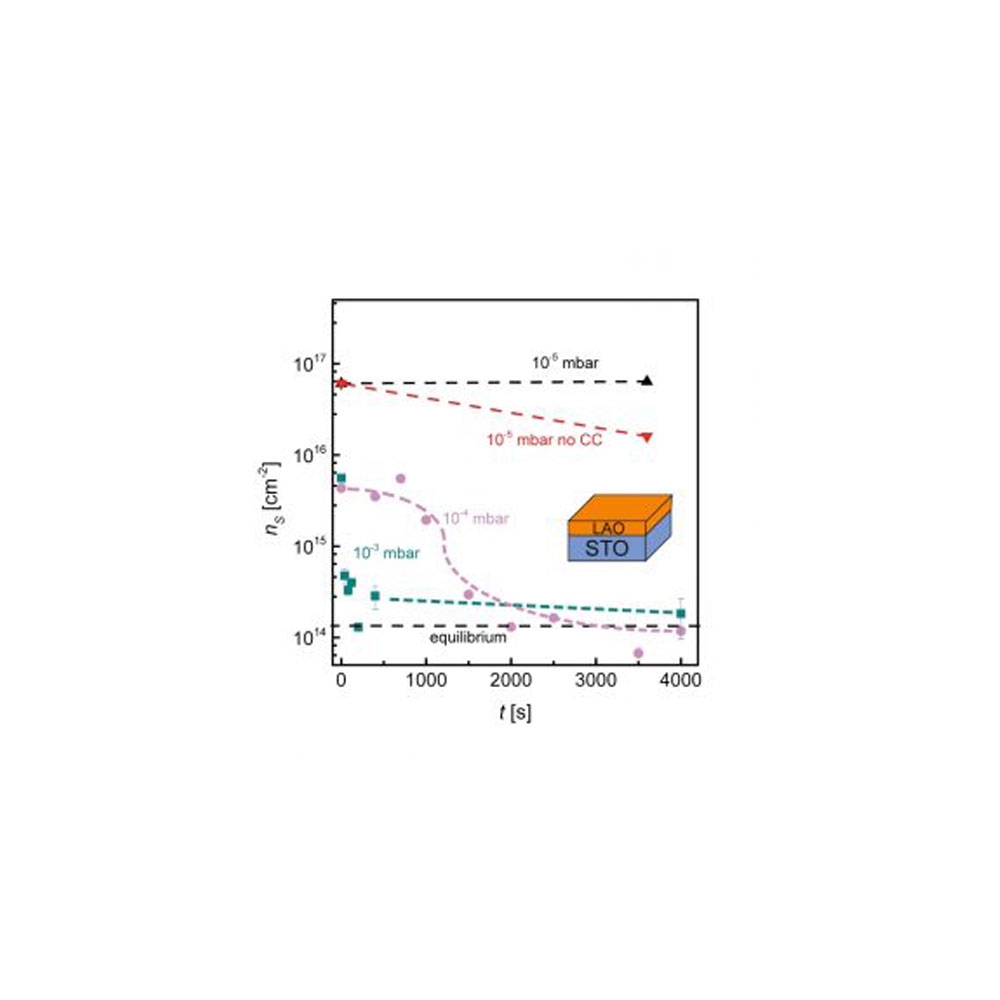Services
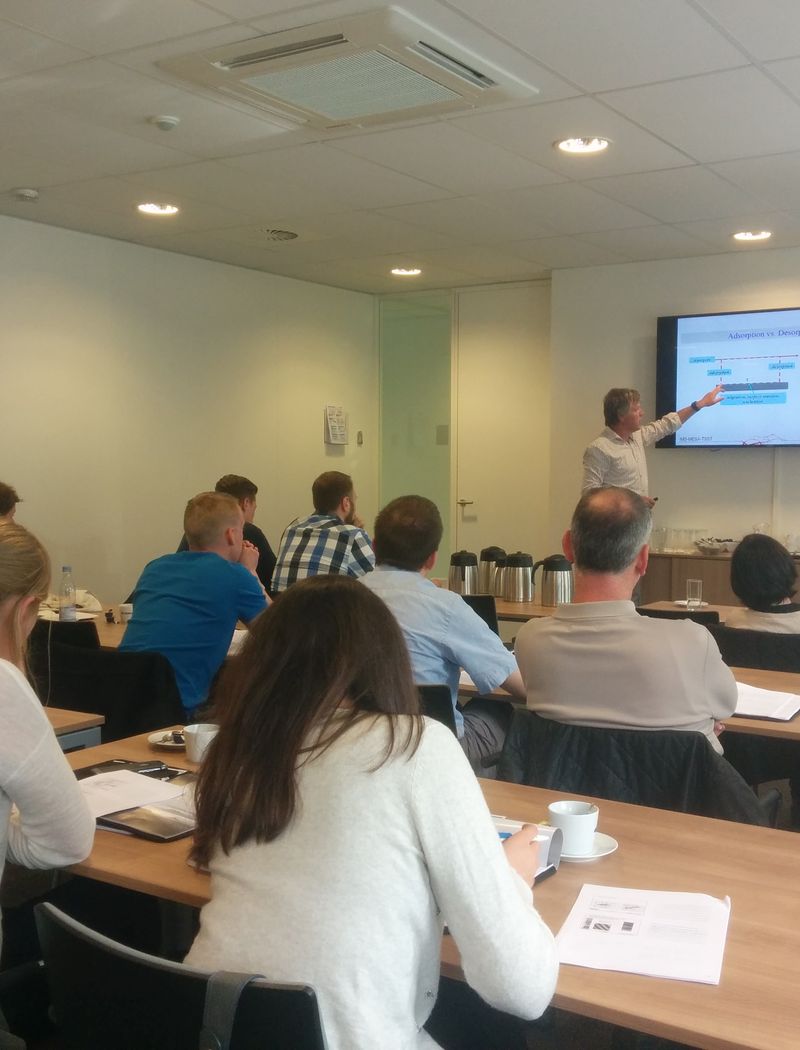

We are looking for thin-film research with your TSST scientific equipment! In our newsletter and on our website we would like to give our customers the opportunity to draw attention to their research. This may include nice scientific results on PLD thin-film growth studies, recent publications, announcements of relevant conferences and meetings you’ll be attending, anything!
We as TSST hope to initiate and create a platform for our customers to facilitate the exchange of thin-film studies and knowledge, create awareness for each other’s research and in this way promote and stimulate interaction among researchers in our field!
So if you’re interested in presenting your work, please contact us!
One Step Toward a New Generation of C‑MOS Compatible Oxide P−N Junctions: Structure of the LSMO/ZnO Interface Elucidated by an Experimental and Theoretical Synergic Work
Daniele Pullinia,Mauro Francesco Sgroia, Agnes Mahmouda,b, Nicolas Gauquelinc, Lorenzo Maschiob, Anna Maria Ferrarib, Rik Groenend, Cas Damend,Guus Rijndersd,e, Karel Hendrik Wouter van den Bosc,Sandra Van Aertc,and Johan Verbeeckc
a Centro Ricerche FIAT, Torino, Italy
b Dipartimento di Chimica and NIS Centre, Università di Torino, Italy c EMAT University of Antwerp, Antwerp, Belgium
d Twente Solid State Technology, Enschede, The Netherlands
e Faculty of Science and Technology and MESA+ Institute for Nanotechnology, University of Twente, Netherlands
For the full article click here.
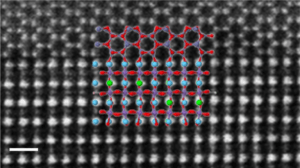
Georgios Araizi-Kanoutas, Jaap Geessinck, Nicolas Gauquelin, Steef Smit, Xanthe H. Verbeek, Shrawan K. Mishra, Peter Bencok, Christoph Schlueter, Tien-Lin Lee, Dileep Krishnan, Jarmo Fatermans, Jo Verbeeck, Guus Rijnders, Gertjan Koster, and Mark S. Golden
Phys. Rev. Materials 4, 026001 – Published 10 February 2020
Complex oxides, in particular, perovskite transition metal oxides (TMOs) are of interest to replace conventional semiconductors, because of the possibility to use spin, orbital and lattice degrees of freedom, next to conventional charge manipulation. Where band bending at the interfaces between semiconductors is well understood, the same procedure cannot be applied to TMOs. This limits our understanding on how heteroepitaxy affects the performance of the individual layers. Therefore, the charge transfer at the interface between TMOs has been investigated using the LaCoO3 – LaTiO3 interface as a model system.
Samples with various combinations of ultra-thin LaCoO3 and LaTiO3 layers have been fabricated using Reflection High-Energy Electron Diffraction (RHEED) assisted Pulsed Laser Deposition (PLD). Without a proper structure evaluation, other valence-changing effects cannot be ruled out, therefore correct perovskite structure of these ultra-thin layers was verified using Scanning Transmission Electron Microscopy. The valence of Co and Ti was determined using electron and x-ray spectroscopy techniques. By systematically varying the thickness and controlling all aspects of the fabrication process, significant interfacial charge transfer could be observed, active within 3 unit cells of the interface. For 2 unit cells of LaCoO3 sandwiched between LaTiO3, full conversion from Co3+ to Co2+ was observed, indicating a minimal transfer of 1 electron per interface. By introducing a 2u.c. LaAlO3 layer in between LaCoO3 and LaTiO3, the charge transfer was severely reduced, providing an efficient way to block these effects and further illustrating the interfacial nature.
After finding the interfacial charge transfer, X-ray Magnetic Circular Dichroism was used to investigate the spin transition and magnetic properties of LaCoO3 with and without charge transfer. The paramagnetic ground state found for all samples, is an indication that strain by itself is not enough to trigger ferromagnetism in LaCoO3.
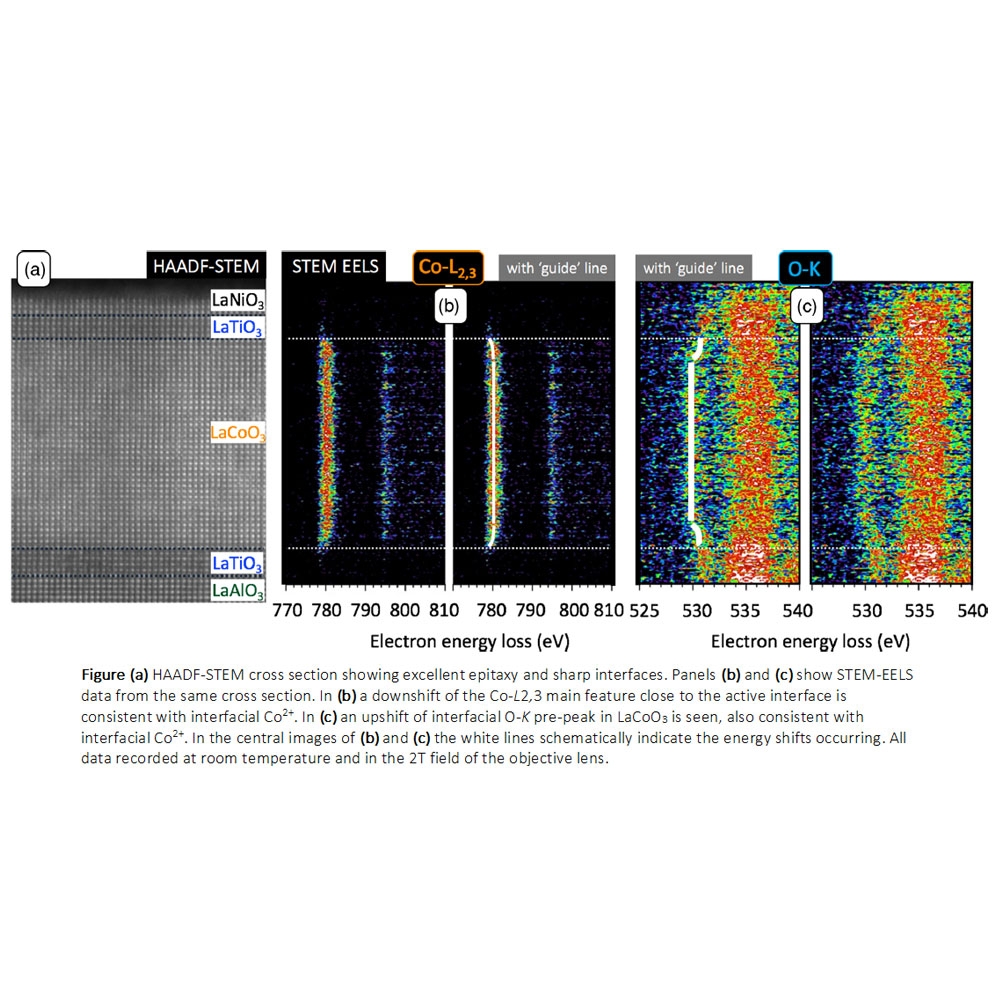
Felix V.E. Hensling, Hongchu Du, Nicolas Raab, Chun-Lin Jia, Joachim Mayer, and Regina Dittmann
We here present a method to engineer Ruddlesden-Popper-type antiphase boundaries in stoichiometric homoepitaxial SrTiO3 thin-films. This is achieved by using a substrate with an intentionally high miscut, which stabilizes the growth of additional SrO at the bottom interface. We prove the success of this strategy utilizing transmission electron microscopy. We find that these antiphase boundaries significantly influence the resistive switching properties. In particular, devices based on SrTiO3 thin-films with intentionally induced antiphase boundaries do not require a forming step, which is ascribed to the existence of preformed filaments.
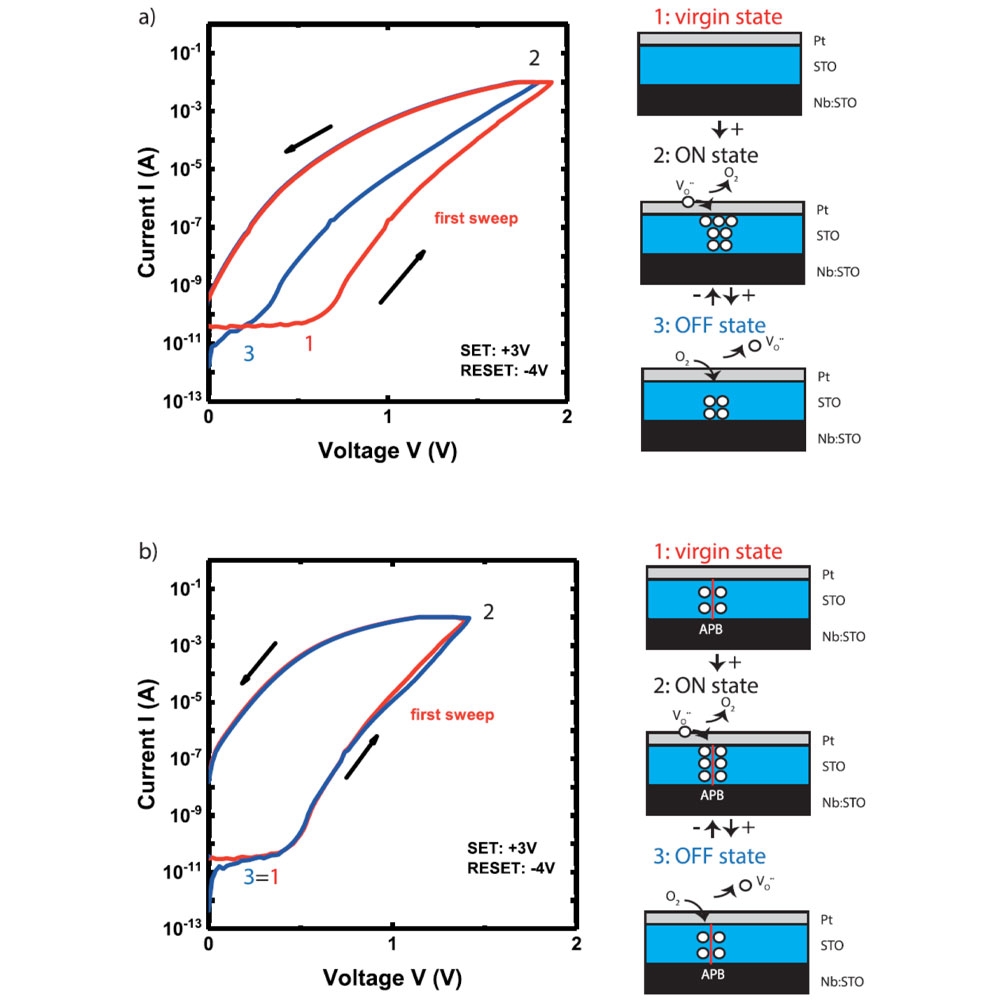
Urška Gabora,b, Matjaž Spreitzera*, Hana Uršičc, Elena Tchernychovad, Zoran Samardžijae,Wen J. Wu f, Danilo Suvorova
a Advanced Materials Department, Jožef Stefan Institute, Ljubljana, Slovenia
b Jožef Stefan International Postgraduate School, Ljubljana, Slovenia
c Electronic Ceramics Department, Jožef Stefan Institute, Ljubljana, Slovenia
d Department of Materials Chemistry, National Institute of Chemistry, Ljubljana, Slovenia
e Department for Nanostructured Materials, Jožef Stefan Institute, Ljubljana, Slovenia
fDepartment of Engineering Science and Ocean Engineering, National Taiwan University, Taipei, Taiwan
Growth of Pb(Mg1/3Nb2/3)O3-0.33PbTiO3 thin-films by pulsed-laser deposition directly on non-conductive SrTiO3 substrates for d33-mode energy harvesters (EHs) was studied, as they offer a higher figure-of-merit than d31-mode EHs. It was found that a high defect density, present in the film grown at 0.13 mbar, is manifested in the form of splitting of the (00l) peaks in X-ray diffraction, which was avoided by raising the process pressure to 0.27 mbar. Nevertheless, both films grow in a combined 2D and 3D manner, and form out-of-phase boundaries (OPBs) with a PbO rock-salt structure between the as-grown islands. It was found that the overall composition of the sample with optimized structural and functional properties was Pb1.07Mg0.19Nb0.44Ti0.32O3, which is close to stoichiometric. The surplus of Pb is compensated by the formation of OPBs and Mg deficit maintains macroscopic electroneutrality. In-plane and out-of-plane relative permittivities of 1900 and 980, respectively, imply macroscopic out-of-plane polarization.
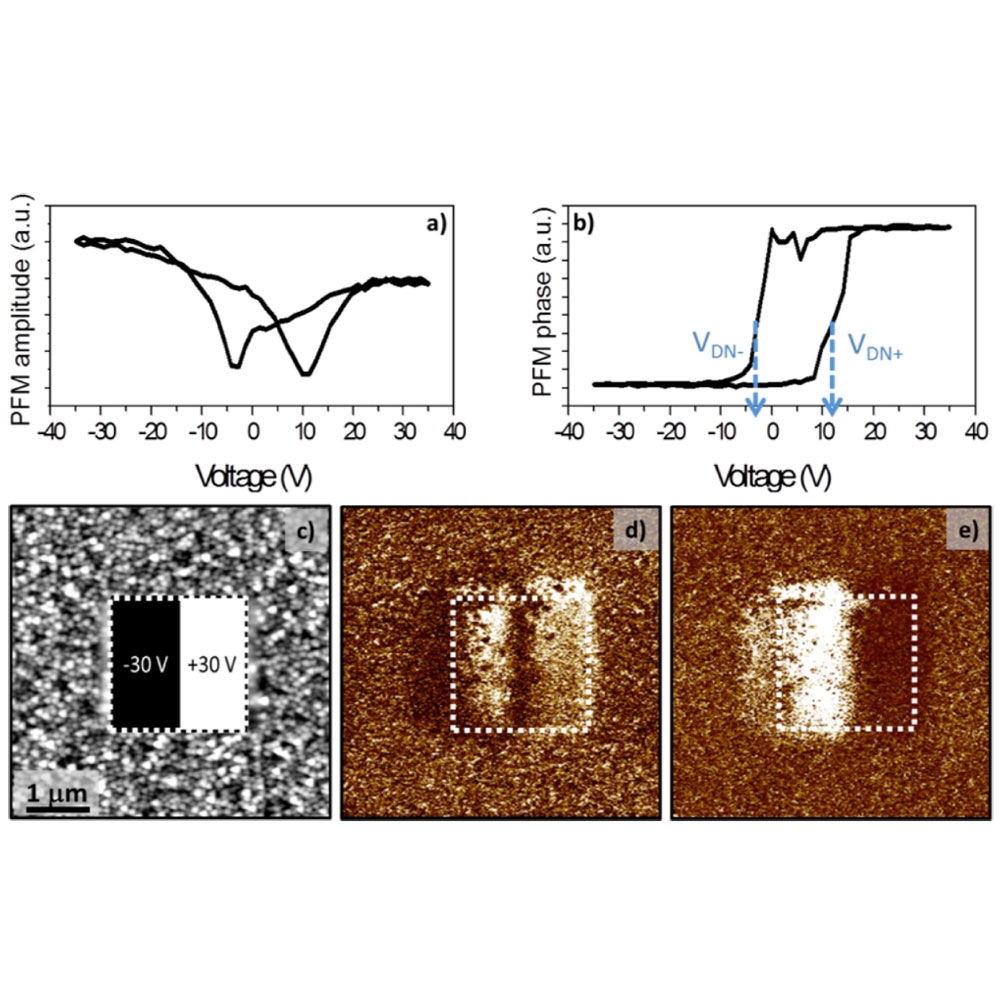
Department of physics, Tsinghua University, Beijing, China.
Nianpeng Lu, Pengfei Zhang, Qinghua Zhang, Ruimin Qiao, Qing He, Haobo Li, Yujia Wang, Jingwen Guo,
Ding Zhang, Zheng Duan, Zhuolu Li, Meng Wang, Shuzhen Yang, Mingzhe Yan, Elke Arenholz, Shuyun Zhou,
Wanli Yang, Lin Gu, Ce-Wen Nan, Jian Wu, Yoshinori Tokura and Pu Yu.
Electric-field control of phase transformation with ion transfer is of great interest in materials and physics science with enormous and important practical applications, such as batteries, smart windows, fuel cells, etc. Increasing the number of transferrable ion species and of accessible crystalline phases could in principle greatly enrich material functionality. However, studies have so far focused mainly on the evolution and control of single ionic species (for example, oxygen, hydrogen or lithium ions), while electric-field control of phase transformation based on selective dual-ion has not yet been reported. Through the creative design, the research group led by Associate Professor Pu Yu at department of physics in Tsinghua University, realized the electric-field control of dual-ion (oxygen and hydrogen) tri-state phases transformation among the model system of brownmillerite SrCoO2.5 originally grown by reflection high energy electron diffraction (RHEED) assisted pulsed laser deposition (PLD), and its counterpart of perovskite SrCoO3-δ and a hitherto-unexplored HSrCoO2.5 phase by employing the ionic liquid gating. Because of the extremely distinct optical, electrical and magnetism properties among these three phases, this result can be readily applied to applications of electrochromic, resistive switch and magnetoelectric coupling devices, etc.
This work reports for the first time the reversible and nonvolatile electric-field control phase transformations by dual-ion switches with the discovery of both the exotic tri-state electrochromic and magnetoelectric effects, which hold great potential in the optical, electrical and magnetic device applications. Furthermore, it is worth pointing out that, conventionally the strain (pressure) or chemical doping are widely employed to design/fabricate the materials with novel physical properties. While in this work, the electric-field control of dual-ion insertion and extraction and their corresponding tri-state phase transformation, offer a brand-new pathway to modulating the material functionalities, which can redesign the material functionalities even after the growth. More importantly, this method can be widely employed in a wide range of material systems to generalize exotic crystalline structures and novel physical properties.
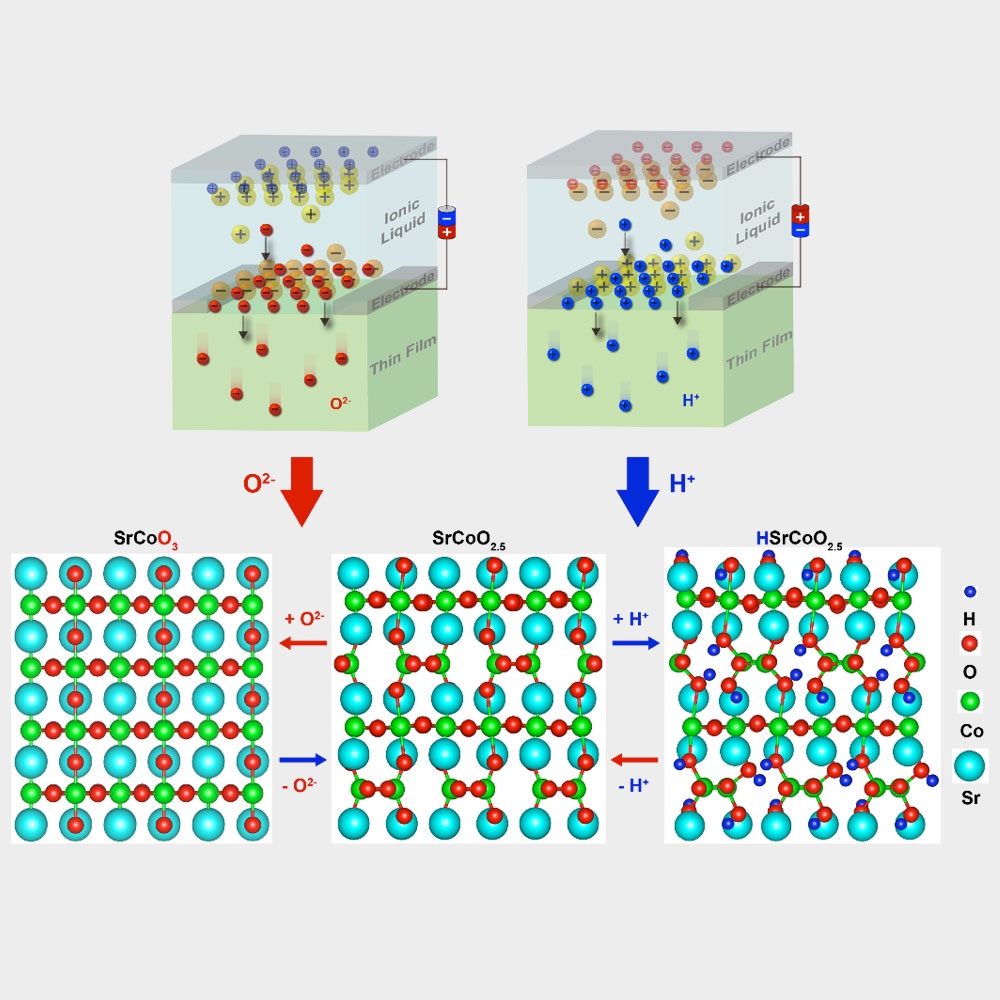
Christoph Hauser, Christian Eisenschmidt, Tim Richter, Alexander Müller, Hakan Deniz, and Georg Schmidt
Martin-Luther-Universität Halle-Wittenberg, Institut für Physik, Halle, Germany
Yttrium Iron Garnet (YIG) is the prominent material in the field of spintronics and magnonics, due to its ultra low damping and very narrow linewidth in ferromagnetic resonance (FMR). Its insulating properties make it useful as a spin injector in spin pumping experiments. Thin-films of YIG are mostly grown by high temperature pulsed laser deposition. We are able to grow nanometer thin-films at room temperature, which result in an amorphous layer. These layers are then annealed in a quartz oven under pure oxygen or argon atmosphere at ambient pressure. For both atmospheres the films crystallize and become fully epitaxial with respect to the substrate without any visible defects. The saturation magnetizations are comparable to literature with no significant difference for the annealing atmospheres. In ferromagnetic resonance our method achieves the lowest damping (α = 6•10-5) and the smallest linewidth (1.3Oe) for nanometer thin layers. For deposition in an argon atmosphere and annealing in oxygen, the layers show low quality, so apparently oxygen during deposition is essential for a good layer quality. When the layers are annealed in vacuum, the magnetic properties are completely lost and the chemical structure of the YIG changes. We can thus state that a gas atmosphere during annealing is necessary for a high layer quality but we were not able to measure a significant difference in the layer properties when changing the annealing atmosphere from oxygen to argon.
Click here and here for full articles.
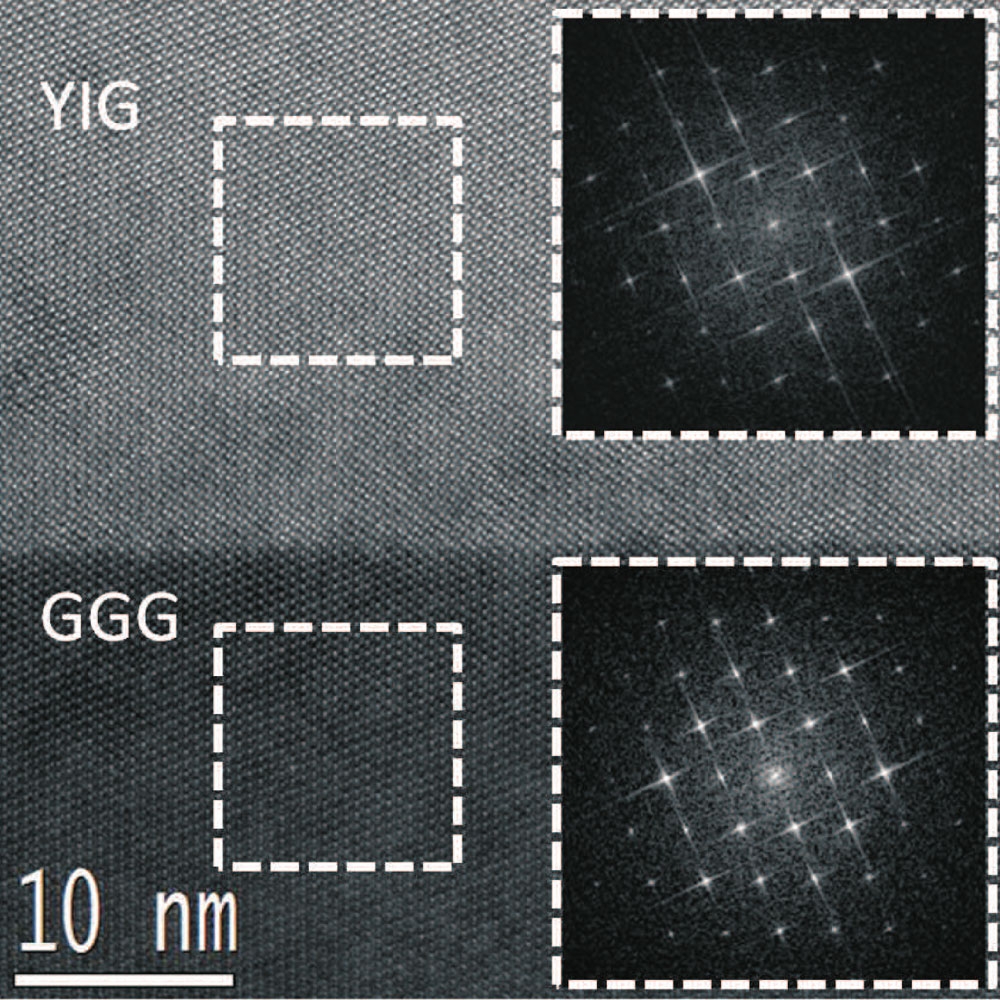
Gabriele De Luca1, Nives Strkalj1, Sebastian Manz1, Corinne Bouillet2, Manfred Fiebig1 and Morgan Trassin1
1 Department of Materials, ETH Zürich, Vladimir-Prelog-Weg 4, 8093 Zurich, Switzerland
2 Institut de Physique et Chimie des Matériaux de Strasbourg – CNRS UMR 7504, 67034 Strasbourg Cedex 2, France
* morgan.trassin@mat.ethz.ch
We demonstrate the full access in observation and engineering of the amplitude and orientation of polarization in ferroelectric multilayers for two prominent ferroelectrics, BaTiO3 and BiFeO3 during the pulsed laser deposition process. We track in situ the evolving polar states using optical second harmonic generation (ISHG) combined with reflection high energy electron diffraction monitoring (RHEED).
We detect in real time the thin-film critical thickness for the emergence of the polar state and we probe its evolution with the deposition time with a single unit cell accuracy. We follow the buildup and the bulk like saturation of the unit cell polarization in these important ferroelectrics. The role of polarization anisotropy and domains formation are detailed.
Using a combination of epitaxial strain engineering and surface termination control, we design and probe ferroelectric heterostructures with user defined polarization configuration. The unprecedented degree of freedom brought by this non invasive tool in tracking and controlling polarization is only one possible route towards a novel class of oxide-electronic devices. Going beyond proper ferroelectricity, ISHG may be employed to track electronic states, phase transitions and many other functional oxide-heterostructure correlations.
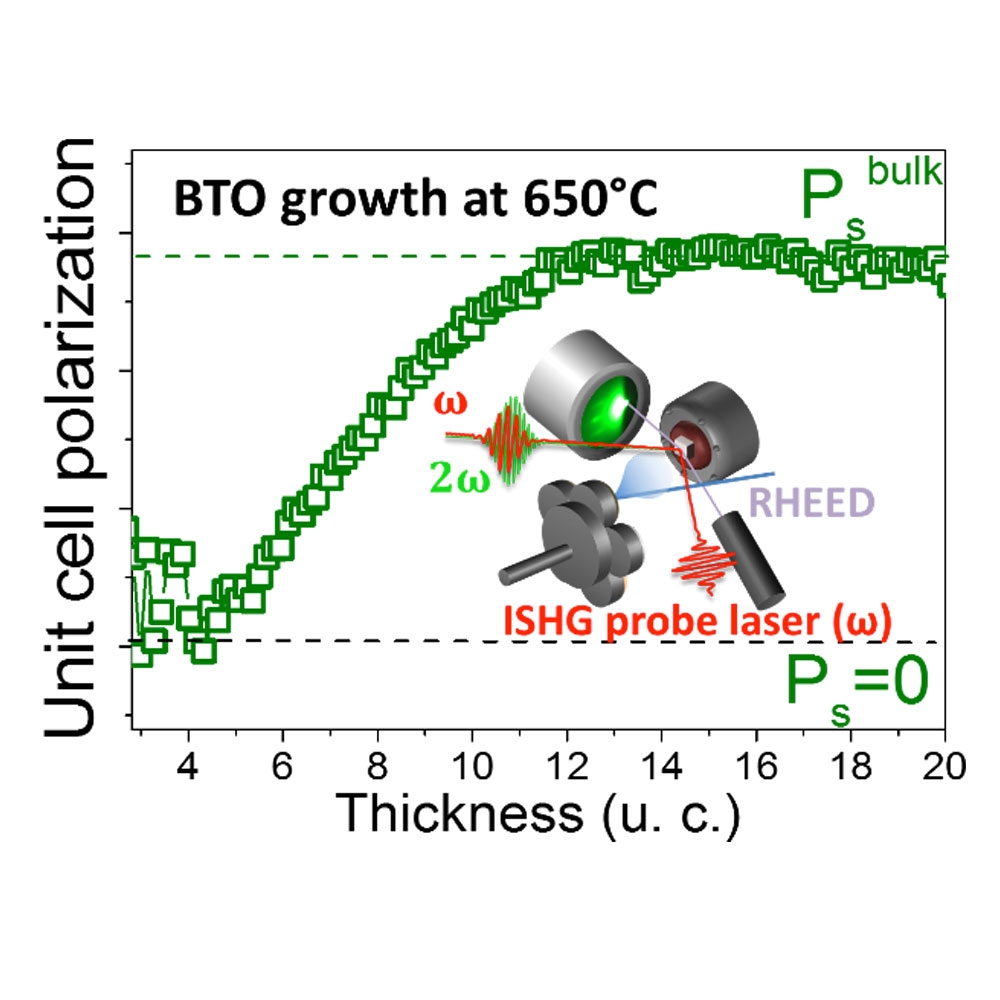
Felix V.E. Hensling, Chencheng Xu, Felix Gunkel & Regina Dittmann
Peter Grünberg Institut, Forschungszentrum Jülich GmbH, Jülich,Germany
RWTH Aachen University, Institute of Electronic Materials, Aachen, Germany
The reduction of oxides during annealing and growth in low pressure pulsed laser deposition (PLD) processes is a widely known problem. We hence investigate the influence of mere annealing and of growth in PLD systems to shed light on the reasons behind the reduction of perovskites. When comparing the existing literature regarding the reduction of the perovskite model material SrTiO3 (STO) it is conspicuous that one finds different oxygen pressures required to achieve reduction for vacuum annealing and for chemically controlled reducing atmospheres. The unraveling of this discrepancy is of high interest for low pressure PLD of thin-films heterostructures to gain further understanding of the reduction of the STO. For thermal annealing, our results prove the attached measurement devices (mass spectrometer/ cold cathode gauge (CC)) to be primarily responsible for the reduction of STO in the deposition chamber by shifting the thermodynamic equilibrium to a more reducing atmosphere. We investigated the impact of our findings on the PLD growth at low pressure for LaAlO3/SrTiO3. During deposition the reduction triggered by the presence of the laser plume dominates and the impact of the measurement devices plays a minor role. During post annealing a complete reoxidization of samples is inhibited by an insufficient supply of oxygen.
